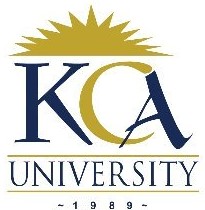
UNIVERSITY EXAMINATIONS: 2018/2019
EXAMINATION FOR THE DEGREE OF BACHELOR OF SCIENCE IN
INFORMATION TECHNOLOGY /BACHELOR OF BUSINESS IN
INFORMATION TECHNOLOGY
BIT2201 SIMULATION AND MODELING
FULL TIME/PART TIME/DISTANCE LEARNING
DATE: DECEMBER, 2018 TIME: 2 HOURS
INSTRUCTIONS: Answer Question One & ANY OTHER TWO questions.
QUESTION 1: 30 MARKS (COMPULSORY)
a) With appropriate example for each differentiate between Analytical Solution and Simulation
Models. 2 Marks
b) List TWO advantages of simulation models as compared to analytical solution models.
2 Marks
c) Discuss any five reasons for using simulation. 5 Marks
d) Discus four benefits of simulation and modeling to any business organization 4 Marks
e) What is simulation clock? And what is its importance in simulation and modeling.
5 Marks
f) Describe two mechanisms for the simulation clock advancement, highlighting two
advantages and two disadvantages of each. 6 Marks
g) What is the goal of modeling? 2 Marks
h) Describe the three measures of the system performance in a single server queuing system,
illustrating the formulae of how they are obtained? 6 Marks
QUESTION 2: 20 MARKS
a) With the help of well labeled diagrams illustrate and describe the four types of queues that
exist giving common place examples. 4 Marks
b) Using real life examples, discuss any four applications of simulation and modeling
4 Marks
c) Discuss any four drawbacks of simulation 4 Marks
d) Discuss any four capabilities that should be considered when selecting simulation software.
4 Marks
e) Not all simulation studies are a success, discuss four pitfalls that cause simulation studies to
fail explaining how to overcome them. 4 Marks
QUESTION 3:20 MARKS
a) Giving examples, describe the following terms 4 Marks
i. Monte Carlo Simulation
ii. Poisson distribution
b) By use of an example explain your understanding of the term “Identical and Independent
Randomly Distributed (IID) Events. 3 Marks
c) It is not always possible to experiment and study with real systems hence the need for
modeling. Discuss three reasons why that is so. 3 Marks
d) State and briefly explain four properties of a good arithmetic random number generator.
4 Marks
e) By use of the mid-square method simulate the first five random variates given that Z0=4646
6 Marks
QUESTION 4: 20 MARKS
a) Describe any two activities that entail initialization of a discrete simulation model
2 Marks
b) Discuss the two short comings of the mid-square method as generator of random numbers.
2 Marks
c) Use a mixed linear congruential random number generator with a=67, m=31, c=17 and seed
X0 = 117 to generate the first FIVE random variates on [0,1]. 5 Marks
d) Consider a single server queuing system. The system starts at time t=0. The arrival time of
customers is: 0.8, 1.4, 2.7, 3.2, 3.8, 8.0, 8.6, 9.0, 9.2, and 9.8. The departure times are: 2.2, 4.0,
5.0, 6.2, and 10.0. Time is in minutes. The first in first out queuing discipline is followed.
Simulate this system for six clients and estimate:
i) The average delay in the waiting line 3 Marks
ii) The average number of clients in the waiting line at any time t 6 Marks
iii) The expected utilization of server. 2 Marks
QUESTION 5: 20 MARKS
f) Giving appropriate examples, describe the following terms as used in the context of
simulation and modeling. 5 Marks
i. a system
ii. System performance
iii. A model
iv. Computer simulation
v. A random variable?
b) Describe six common statistics included in the output report of a simulation programming
system. 6 Marks
c) Describe all the components found in most discrete event simulation models.
10 Marks
